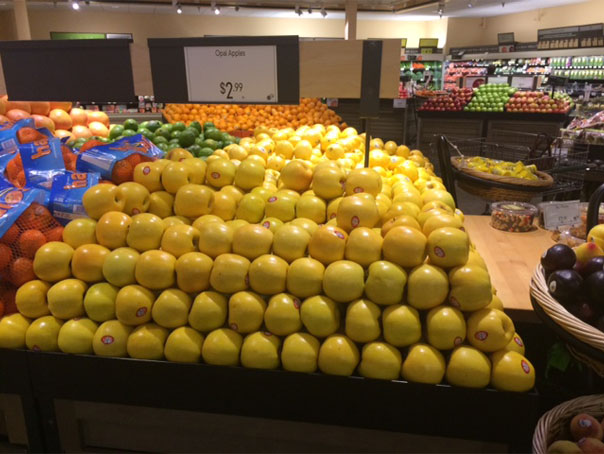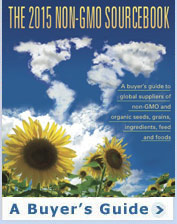
Opal apples are naturally non-browning and Non-GMO Project verified
To access all the articles in this month's issue of The Organic & Non-GMO Report, SUBSCRIBE NOW.
Opal Apple: non-browning, non-GMO alternative to GMO apple
By Arianne Pfoutz
Published: March 27, 2015
Category: Non-GMO Company Profiles
Growing fruit comes naturally to Ralph Broetje—Broetje Orchards in eastern Washington State, developed with his wife Cheryl, is the largest contiguous orchard in the US. When he tried out a new apple variety bred in the Czech Republic, a cross between the Golden Delicious and the Topaz, the bright yellow fruit turned out to be firm, crispy and crunchy, with a sweet/tangy flavor and floral aroma. And, by “happy coincidence,” the Opal Apple was non-browning: its low occurrence of the browning enzyme delays the process.
Today, Ralph grows one million Opal trees, spanning nearly 1,000 acres of the total 8,000 acres (10 million trees) the company oversees. The Opal debuted in the US in 2010. To distinguish Opals from the recently approved genetically modified, non-browning Artic Apple, Broetje put the seal on it—last year, the Opal became the first apple to achieve Non-GMO Project verification.
Centralization for Quality Control
Broetje Orchards is unique in that produce is grown, stored, and packed in the same location, with a 1.1 million square-foot modern warehouse and packing facility on-site, with 105 atmosphere-controlled rooms. The company packs 25,000 boxes a day—8 million boxes a year—of 15 different varieties, including Opal, Fuji, Gala, Pink Lady, Braeburn, and Golden Delicious. Broetje employs 1,100 year-round, with 1,000 seasonal workers.
Opals are only available December through April; almost 12 million pounds are distributed each season. Around 15% of the Opals are organic.
Keith Mathews, CEO of sales and marketing at FirstFruits, said extensive funds have gone into social media outreach and public events to market the Opal, including tastings at 5K races, winter carnivals and conferences, and in-store demos. Currently the Opal is priced midway between mainline apples and the Honeycrisp.
Threats from GM apples
Mathews said contamination from the new GM Arctic Apple is a definite possibility. “Washington farmers have put their entire lives into apples since the early 1900s. Our Northwest Horticultural Council lobbied hard in DC to oppose GM apples, but we lost. The risk lies in bees pollinating our non-GMO acres.”
Ralph notes that none of the farmers he knows are eager to grow a GM apple, and that its presence might create doubts among consumers about eating apples at all. “There’s no need for a GM apple,” he said.
Mathews noted that the sliced apple business is the only point of value for a non-browning apple, and it’s an important but very small niche of the apple market at about 7-8 million bushels each year.
The company enrolled in Non-GMO Project verification to reinforce consumer awareness that a non-browning apple doesn’t have to be a GM apple. “The folks at the Project were very helpful,” Mathews said. “One complication occurred because I put through my organic and conventional Opals at the same time, and we normally wax our conventionals. There is a miniscule ingredient in the wax we had to deal with, so that took a bit of fine-tuning and frequent checking.”
Mathews expects demand for Opals to build. “We will easily get to one million boxes each season with what’s in the ground already.”
© Copyright The Organic & Non-GMO Report, April 2015




